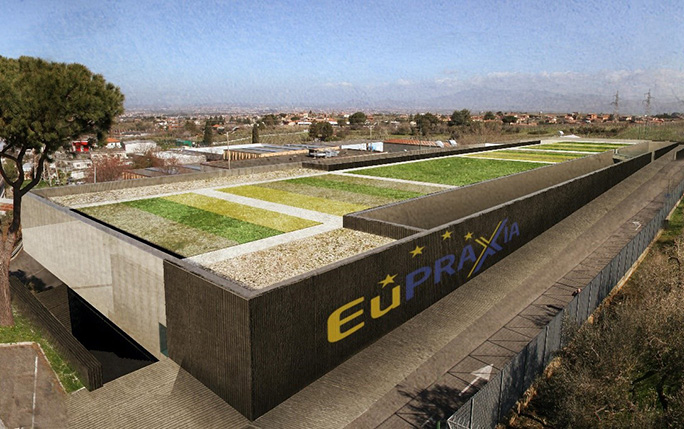EuPRAXIA application for European roadmap submitted

On 9th September 2020, the Italian government submitted an application to include the European Plasma Research Accelerator with Excellence in Applications (EuPRAXIA) in the European roadmap for large research infrastructures. The governments of the Czech Republic, Hungary, Portugal and the United Kingdom have provided strong letters of support for this ESFRI application. Becoming part of the ESFRI-roadmap would further underline the importance of EuPRAXIA as a European research infrastructure.
Until the submission date, 48 institutes from 15 different countries, including the University of Liverpool, have already signed the Consortium Agreement on the EuPRAXIA preparatory phase, either as members (38) or observers (10). The application has received 20 enthusiastic letters of support from key companies, as well as strong letters of support from large representative bodies, such as the TIARA and LEAPS consortia. The project is coordinated by Ralph Assmann from DESY and INFN and Massimo Ferrario from INFN.
Important milestone
Dr Assmann is very pleased with the progress made: “The EuPRAXIA project aims at the construction of an innovative electron accelerator using laser- and electron-beam-driven plasma wakefield acceleration that offers a significant reduction in size and possible savings in cost over current state-of-the-art radiofrequency-based accelerators. The collaboration has published a conceptual design report of this new research infrastructure in 2019 and this was the basis for the application that was now submitted.”
Dr Ferrario added: “This application is an exciting next step for EuPRAXIA. The project already has formal, binding commitments for more than 100 M€, thus far mainly through Italy. This will allow the construction of the Italian pilot facility EuPRAXIA@SPARC_LAB which comprises a new building and hardware that forms part of phase 1 of EuPRAXIA.”
A step into the future
The foreseen electron energy range of 1-5 Giga-electronvolts (GeV) and anticipated characteristics will enable versatile applications in various domains, including compact free-electron lasers (FELs), compact sources for medical imaging and positron generation, table-top test beams for particle detectors, as well as deeply penetrating X-ray and gamma-ray sources for material testing. EuPRAXIA is also designed as a stepping stone to possible future plasma-based facilities, such as linear colliders at the high-energy physics (HEP) energy frontier.
Head of the QUASAR Group, Prof Welsch from the University of Liverpool, who is a member of the project Steering Board and leads communication within the project, said: “The next important step for the project will be the ESFRI review. Once accepted, a preparatory phase for EuPRAXIA would follow to finalize preliminary studies and refine machine specifications and costs estimates from the ESFRI application.”
Further information about the project can be found at www.eupraxia-project.eu and in particular in the EuPRAXIA Conceptual Design Report.